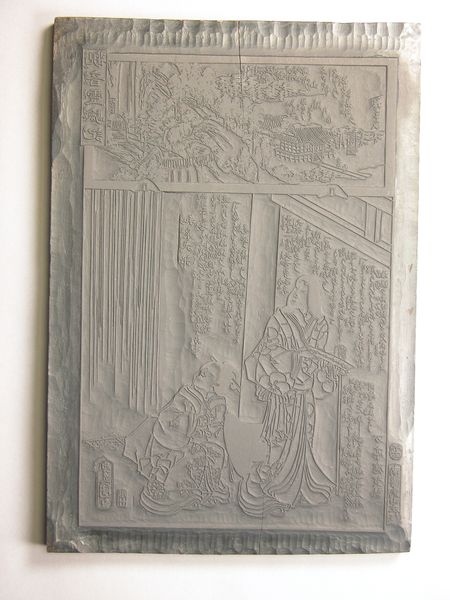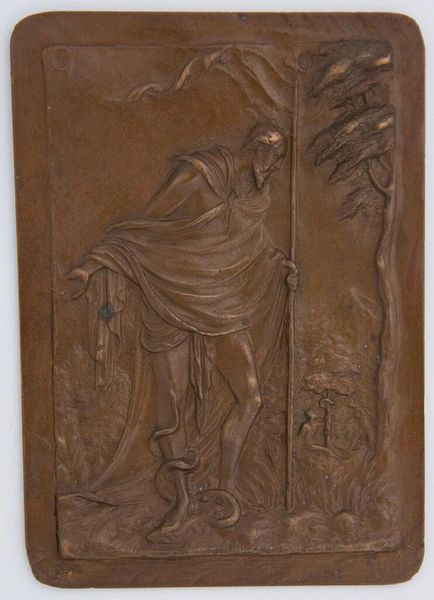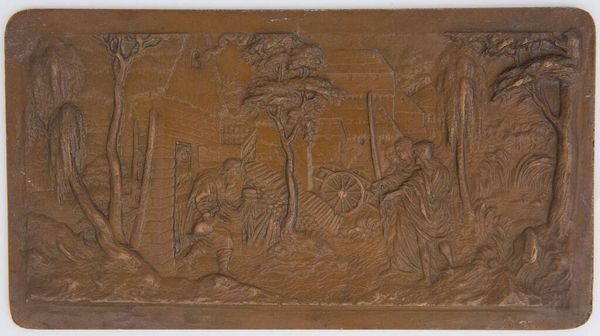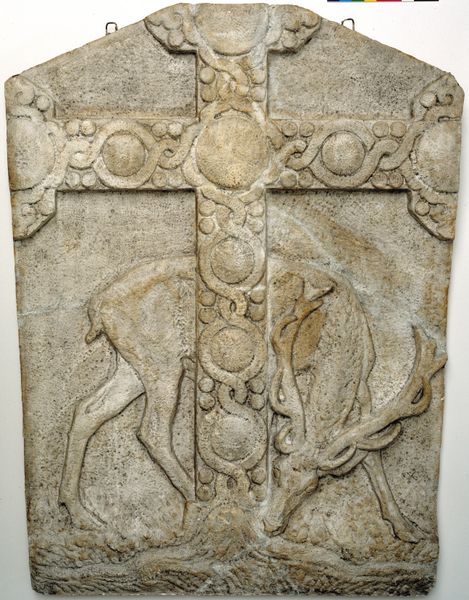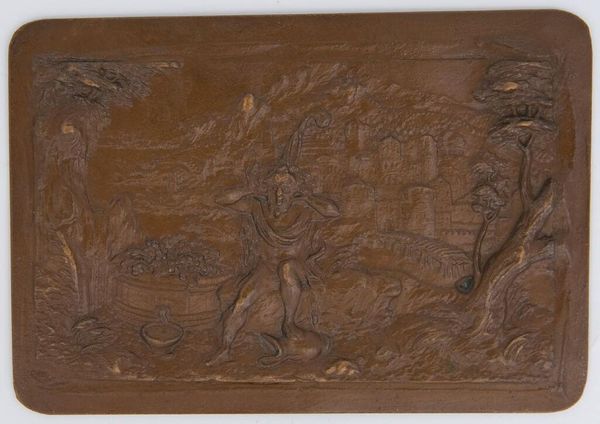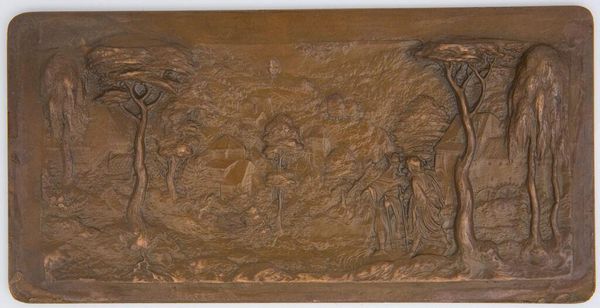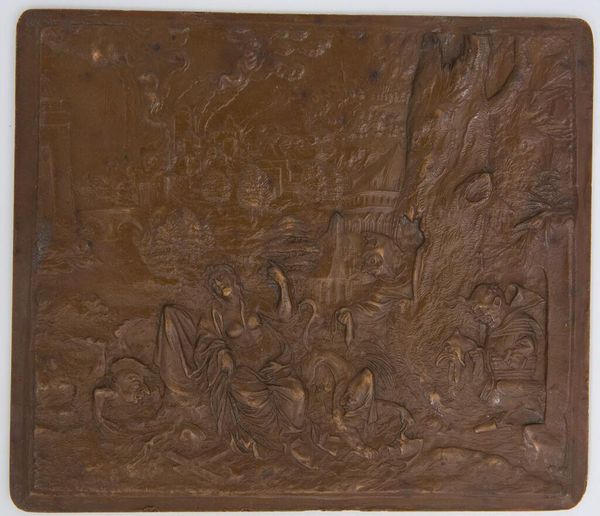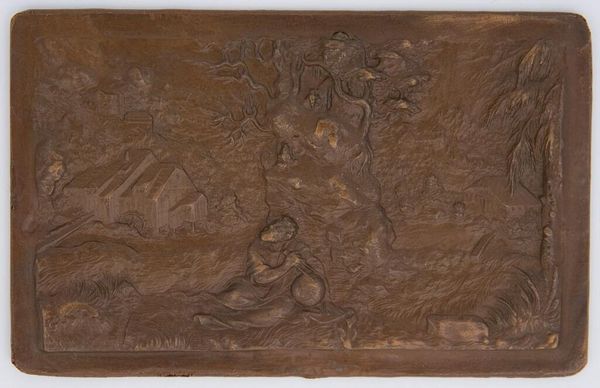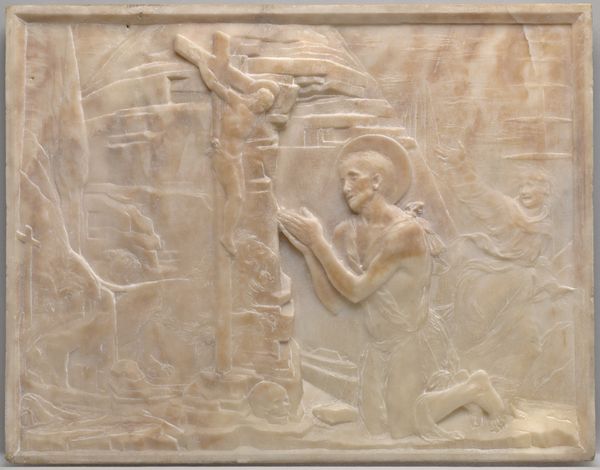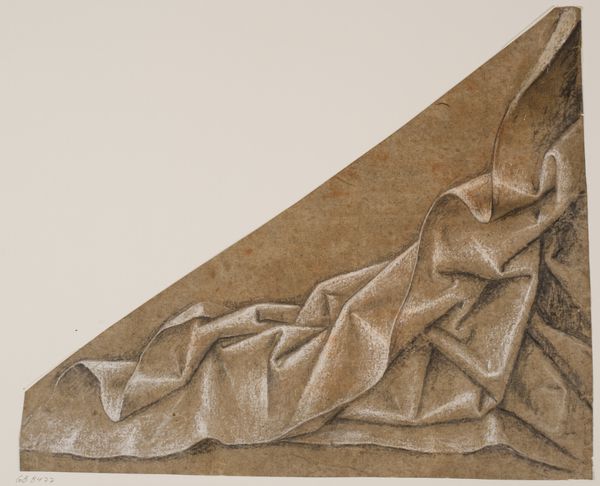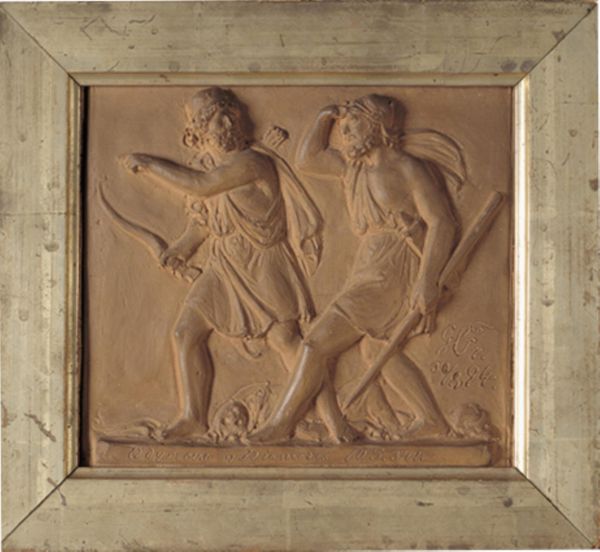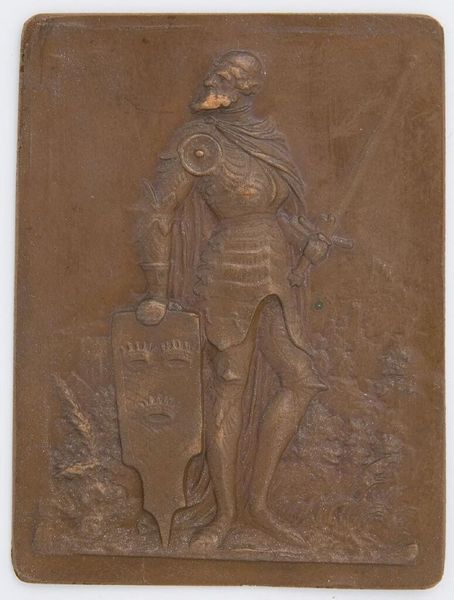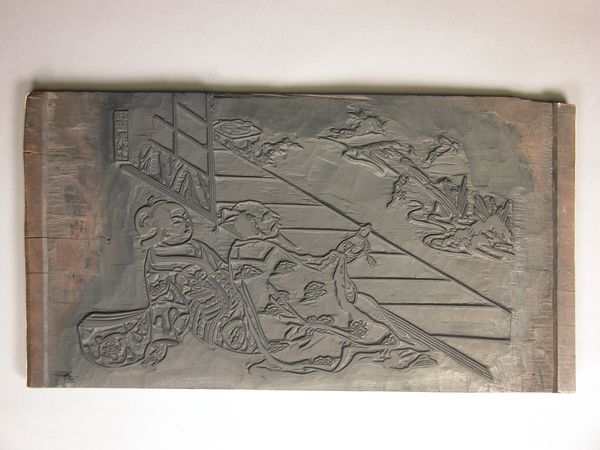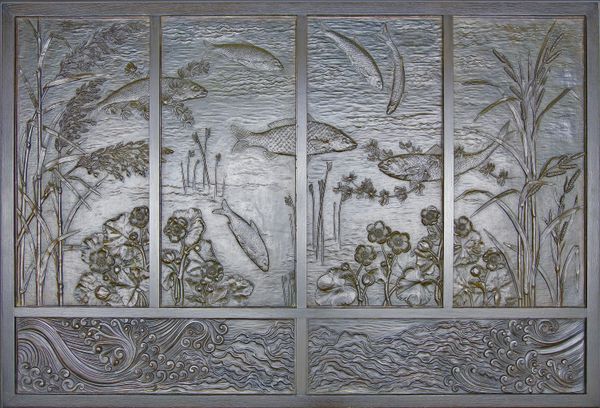
carving, relief, marble
#
medieval
#
carving
#
narrative-art
#
relief
#
figuration
#
history-painting
#
marble
Copyright: Public domain
Curator: Here we have a marble relief sculpture at the University of Texas at Austin by Eric Gill, titled "Relief at University of Texas at Austin, Austin, Texas, USA." Editor: The scene has an almost flattened, medieval look. The figures are stoic but carry a somber weight. Curator: Yes, Gill, known for his Roman Catholic faith, incorporated religious themes into much of his work. This relief captures the moment Simon of Cyrene assists Jesus in carrying the cross. Its placement within the university speaks to how religious narratives can permeate even secular spaces. Editor: Look at the directness of the carving, too. The texture feels intentionally unrefined. The way it emphasizes the physicality of Simon's labor, especially. You can almost feel the weight of that rough-hewn cross. It also evokes manual processes in artistic production. Curator: And it makes you consider the societal implications of such stories—how images of suffering, sacrifice, and redemption resonate differently with various viewers. It's been positioned, and has functioned in the cultural imaginary, both as historical event and spiritual inspiration. Editor: Indeed, it also appears very deliberate. The labor involved and required in making such art gives physical form to the historical suffering that can transform materials, perceptions, and shared understandings. I admire the way he's linked physical labor and emotional weight, bringing material substance to a biblical scene. Curator: Precisely. And while this carving has an incredible intimacy to its scale, placing it in a site of learning suggests there are lessons and stories that resonate far beyond its medium. Editor: Well said! It prompts questions about what we value, what we venerate, and how making helps us think about, as well as shape, the human experience.
Comments
No comments
Be the first to comment and join the conversation on the ultimate creative platform.
